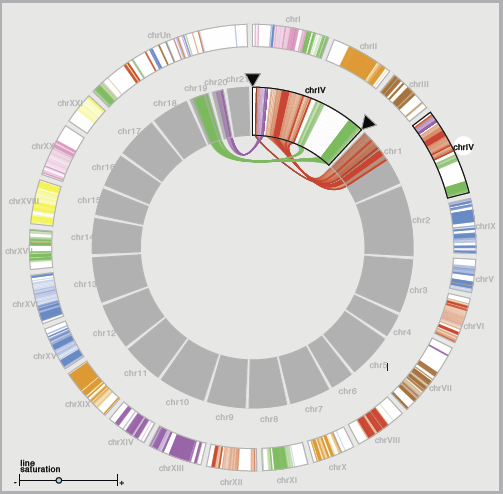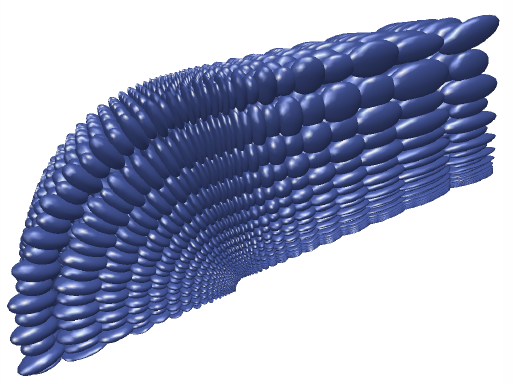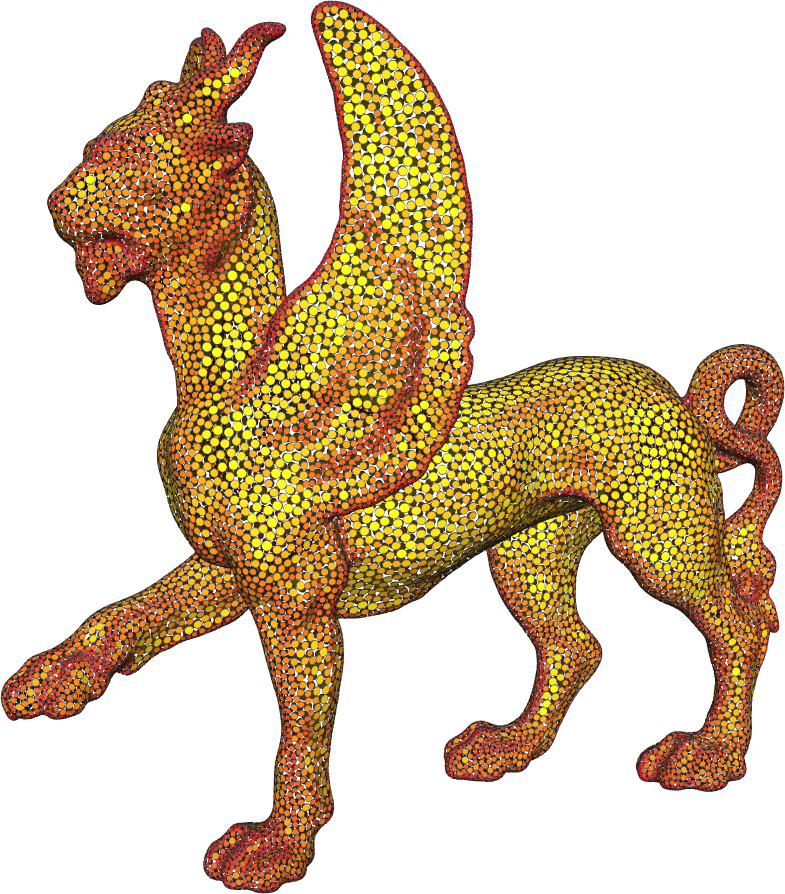Visualization
Visualization, sometimes referred to as visual data analysis, uses the graphical representation of data as a means of gaining understanding and insight into the data. Visualization research at SCI has focused on applications spanning computational fluid dynamics, medical imaging and analysis, biomedical data analysis, healthcare data analysis, weather data analysis, poetry, network and graph analysis, financial data analysis, etc.Research involves novel algorithm and technique development to building tools and systems that assist in the comprehension of massive amounts of (scientific) data. We also research the process of creating successful visualizations.
We strongly believe in the role of interactivity in visual data analysis. Therefore, much of our research is concerned with creating visualizations that are intuitive to interact with and also render at interactive rates.
Visualization at SCI includes the academic subfields of Scientific Visualization, Information Visualization and Visual Analytics.

Mike Kirby
Uncertainty Visualization
Alex Lex
Information VisualizationCenters and Labs:
- Visualization Design Lab (VDL)
- CEDMAV
- POWDER Display Wall
- Modeling, Display, and Understanding Uncertainty in Simulations for Policy Decision Making
- Topological Data Analysis for Large Network Visualization
Funded Research Projects:
Publications in Visualization:
  A Framework for Exploring Numerical Solutions of Advection Reaction Diffusion Equations using a GPU Based Approach A.R. Sanderson, M.D. Meyer, R.M. Kirby, C.R. Johnson. In Journal of Computing and Visualization in Science, Vol. 12, pp. 155--170. 2009. DOI: 10.1007/s00791-008-0086-0 |
  Occam's Razor and Petascale Visual Data Analysis E.W. Bethel, C.R. Johnson, S. Ahern, J. Bell, P.-T. Bremer, H. Childs, E. Cormier-Michel, M. Day, E. Deines, P.T. Fogal, C. Garth, C.G.R. Geddes, H. Hagen, B. Hamann, C.D. Hansen, J. Jacobsen, K.I. Joy, J. Krüger, J. Meredith, P. Messmer, G. Ostrouchov, V. Pascucci, K. Potter, Prabhat, D. Pugmire, O. Rubel, A.R. Sanderson, C.T. Silva, D. Ushizima, G.H. Weber, B. Whitlock, K. Wu. In Journal of Physics: Conference Series, Journal of Physics: Conference Series, Vol. 180, No. 012084, pp. (published online). 2009. DOI: 10.1088/1742-6596/180/1/012084 One of the central challenges facing visualization research is how to effectively enable knowledge discovery. An effective approach will likely combine application architectures that are capable of running on today's largest platforms to address the challenges posed by large data with visual data analysis techniques that help find, represent, and effectively convey scientifically interesting features and phenomena. |
  Biomedical Visualization C.R. Johnson, X. Tricoche. In Advances in Biomedical Engineering, Ch. 6, Edited by Pascal Verdonck, Elsvier Science, pp. 209--272. 2008. |
  Optimization of Volumetric Computed Tomography for Skeletal Analysis of Model Genetic Organisms S.X. Vasquez, M.S. Hansen, A.N. Bahadur, M.F. Hockin, G.L. Kindlmann, L. Nevell, I.Q. Wu, D.J. Grunwald, D.M. Weinstein, G.M. Jones, C.R. Johnson, J.L. Vandeberg, M.R. Capecchi, C. Keller. In The Anatomical Record: Advances in Integrative Anatomy and Evolutionary Biology, Vol. 291, pp. 475--487. 2008. PubMed ID: 18286615 |
  Unified Volume Format: A General System For Efficient Handling Of Large Volumetric Datasets J. Krüger, K. Potter, R.S. MacLeod, C.R. Johnson. In Proceedings of IADIS Computer Graphics and Visualization 2008 (CGV 2008), pp. 19--26. 2008. PubMed ID: 20953270 With the continual increase in computing power, volumetric datasets with sizes ranging from only a few megabytes to petascale are generated thousands of times per day. Such data may come from an ordinary source such as simple everyday medical imaging procedures, while larger datasets may be generated from cluster-based scientific simulations or measurements of large scale experiments. In computer science an incredible amount of work worldwide is put into the efficient visualization of these datasets. As researchers in the field of scientific visualization, we often have to face the task of handling very large data from various sources. This data usually comes in many different data formats. In medical imaging, the DICOM standard is well established, however, most research labs use their own data formats to store and process data. To simplify the task of reading the many different formats used with all of the different visualization programs, we present a system for the efficient handling of many types of large scientific datasets (see Figure 1 for just a few examples). While primarily targeted at structured volumetric data, UVF can store just about any type of structured and unstructured data. The system is composed of a file format specification with a reference implementation of a reader. It is not only a common, easy to implement format but also allows for efficient rendering of most datasets without the need to convert the data in memory. |
  The Need For Verifiable Visualization R.M. Kirby, C.T. Silva. In IEEE Computer Graphics and Applications, Vol. 28, No. 5, pp. 78--83. 2008. DOI: 10.1109/MCG.2008.103 Visualization is often employed as part of the simulation science pipeline, it's the window through which scientists examine their data for deriving new science, and the lens used to view modeling and discretization interactions within their simulations. We advocate that as a component of the simulation science pipeline, visualization must be explicitly considered as part of the validation and verification (V&V) process. In this article, the authors define V&V in the context of computational science, discuss the role of V&V in the scientific process, and present arguments for the need for verifiable visualization. |
  Visual Analysis of Bioelectric Fields X. Tricoche, R.S. MacLeod, C.R. Johnson. In Visualization in Medicine and Life Sciences, Mathematics and Visualization, Springer-Verlag, pp. 205--220. 2008. |
  Who Votes For What? A Visual Query Language for Opinion Data G. Draper, R. Riesenfeld. In IEEE Transactions on Visualization and Computer Graphics, Vol. 14, No. 6, IEEE, pp. 1197--1204. Nov, 2008. DOI: 10.1109/tvcg.2008.187 |












